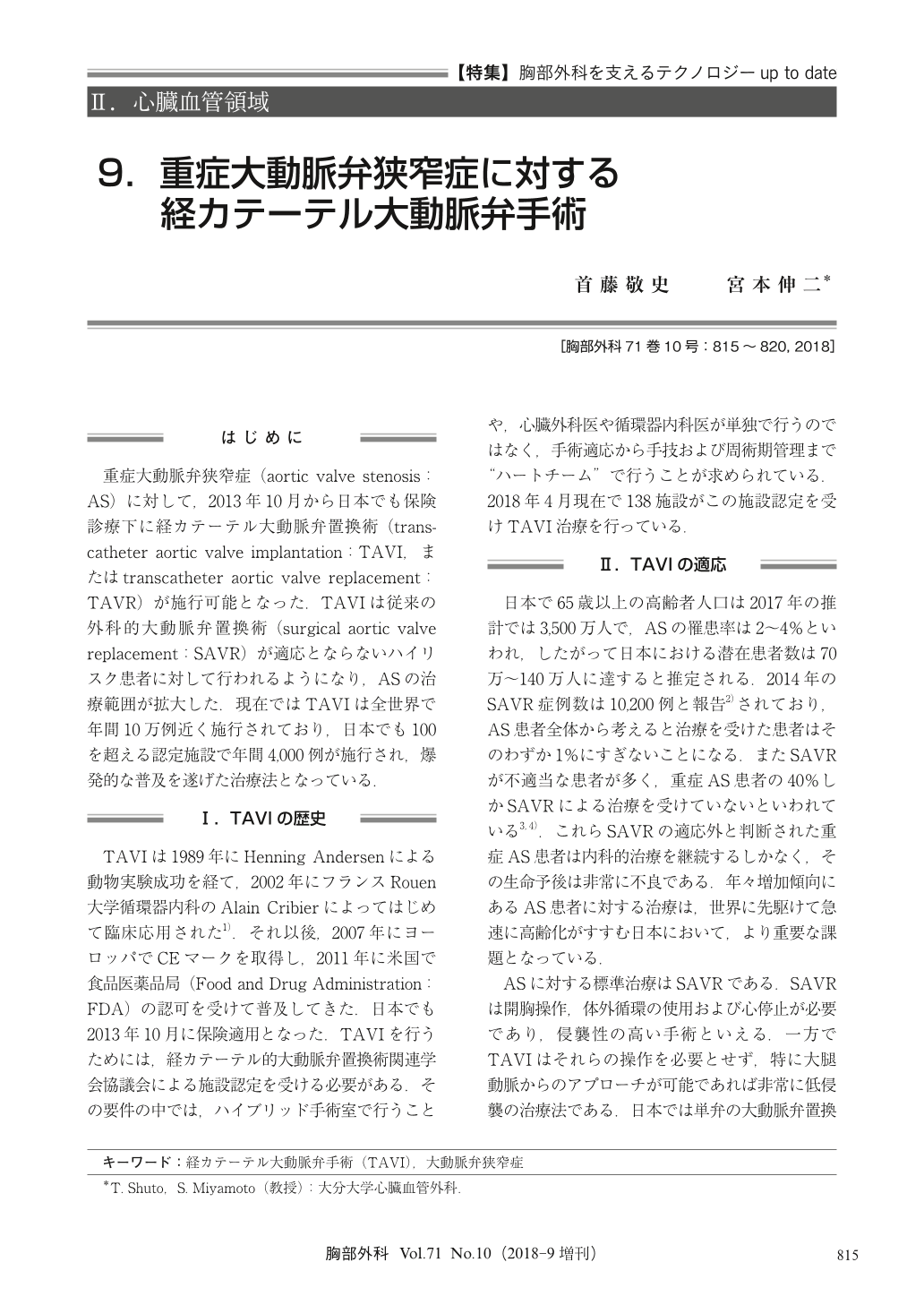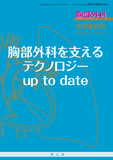Japanese
English
- 有料閲覧
- Abstract 文献概要
- 1ページ目 Look Inside
- 参考文献 Reference
重症大動脈弁狭窄症(aortic valve stenosis:AS)に対して,2013年10月から日本でも保険診療下に経カテーテル大動脈弁置換術(transcatheter aortic valve implantation:TAVI,またはtranscatheter aortic valve replacement:TAVR)が施行可能となった.TAVIは従来の外科的大動脈弁置換術(surgical aortic valve replacement:SAVR)が適応とならないハイリスク患者に対して行われるようになり,ASの治療範囲が拡大した.現在ではTAVIは全世界で年間10万例近く施行されており,日本でも100を超える認定施設で年間4,000例が施行され,爆発的な普及を遂げた治療法となっている.
Since reimbursements for transcatheter aortic valve implantation (TAVI) for severe aortic valve stenosis began in 2013, TAVI has spread rapidly in Japan. TAVI is currently performed in nearly 100,000 cases a year worldwide, and more than 4,000 procedures performed annually in Japan. The TAVI valves available in Japan are Edwards’ “SAPIEN” and the Medtronic “Evolut R”.The “SAPIEN” is a balloon-expanding valve and can be placed via a transfemoral or transapical approach. In contrast, the “Evolut R” is a self-expanding valve and can be placed via the transfemoral, transsubclavian or direct aortic approach. The surgical indications for TAVI are high-risk patients in whom surgical aortic valve replacement (SAVR) cannot be performed by conventional thoracotomy, and dialysis patients are excluded. With the evolution of the associated devices, the performance of TAVI has become comparable to that of SAVR. The outcomes of TAVI in Japan are particularly good compared with the results of the world. Globally, TAVI treatment is being adopted in intermediate- to low-risk patients as well as in high-risk patients. TAVI treatment is expected to continue to spread in the future.

© Nankodo Co., Ltd., 2018


